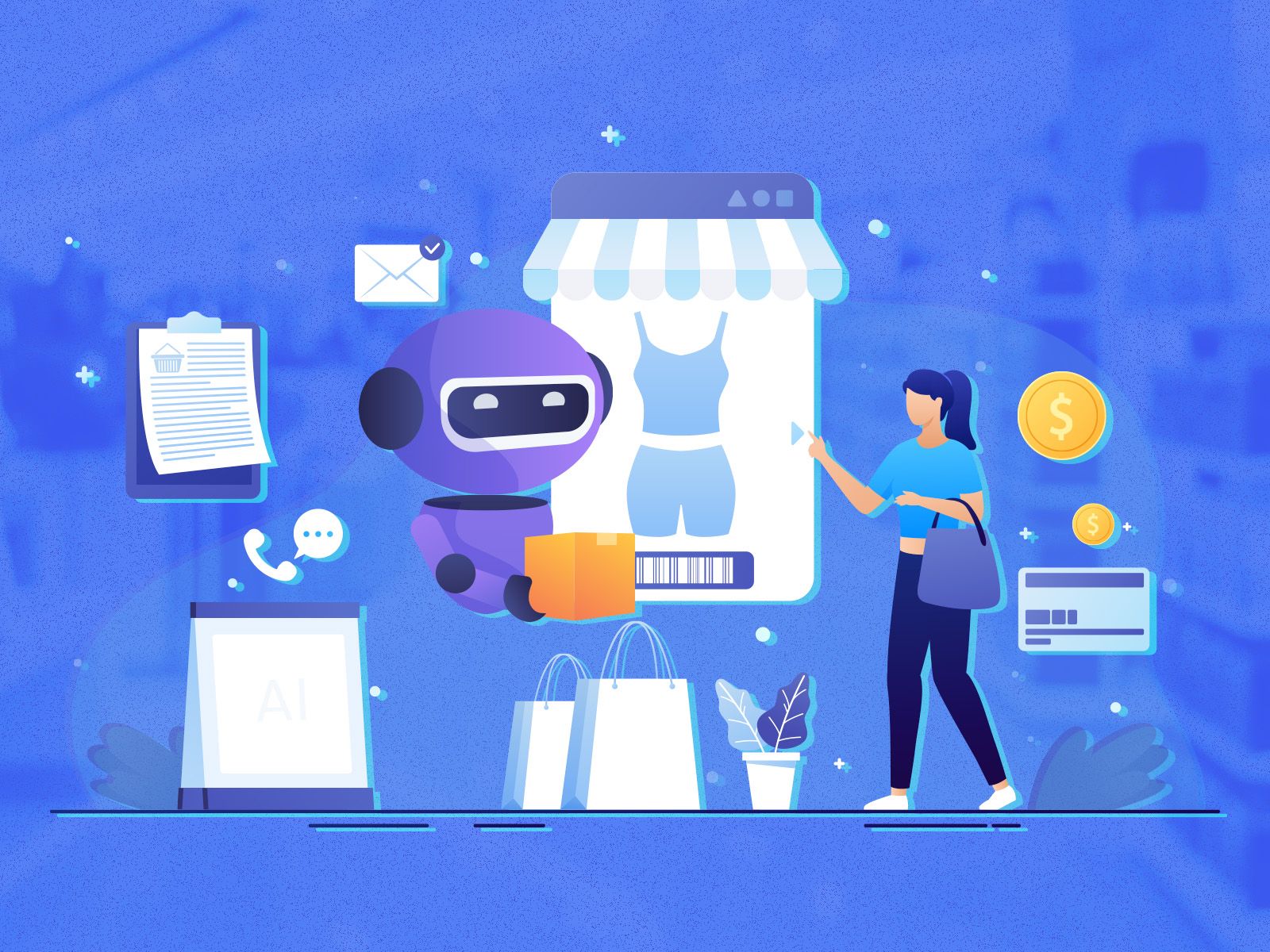How to Integrate Generative AI Into Your Team’s Workflows

Illustration: © AI For All
While there’s been a lot of chatter about the benefits of generative AI (Gen AI), many organizations are not quite sure about how to implement it to boost productivity and effectively integrate it into their employee’s workflows.
A recent SAS study highlighted this uncertainty: while nearly 20 percent of business leaders surveyed (in the U.S. and Canada) had fully implemented Gen AI within their organizations, nearly nine out of 10 senior technology decision-makers didn’t understand how Gen AI impacted business processes.
The study also notes that of those surveyed who are working with Gen AI, 89 percent noted improved employee experience. For companies not quite sure where to employ Gen AI in their day-to-day operations, it’s clear that it can provide a productivity boost.
These four applications provide a good starting point for companies contemplating augmenting their teams with generative AI capabilities.
Three Core Applications
#1: Data Audits: Enhancing Accuracy and Efficiency
Data audits are critical for ensuring the integrity and usability of an organization's data for its specific purpose(s). They are used to help businesses ensure decisions are based on accurate and up-to-date data by identifying incomplete datasets, security gaps, or systemic data issues.
Gen AI can optimize this process by automating routine checks and identifying patterns or anomalies that might be missed by human analysts. And because data auditing, especially on massive and continuously changing datasets, can be extremely time-consuming for a human, AI can speed up the audit process considerably.
For example, IBM’s Watsonx data product offers advanced data analysis capabilities that can be applied to audit large datasets swiftly and accurately.
Other AI data audit providers, such as Egnyte, can help businesses establish ongoing, AI-assisted data audits with a structured process that automates audit tasks and follows workflows that dramatically increase team productivity by offloading that work from employees.
By leveraging Gen AI for data audits, companies can free up their data teams to focus on more strategic initiatives, such as the actual interpretation of the data and more broadly informed decision-making.
#2: Content Creation: Scaling Creativity
When it comes to content creation, Gen AI can be a game-changer. New AI-based tools allow businesses to generate high-quality written content quickly and efficiently.
For example, Copy.ai is a platform purpose-built for marketers and sales professionals and offers a comprehensive “AI Marketing OS” that allows organizations to build workflows that automate content production.
This feature is particularly useful for marketing teams that need to produce a continuous large volume of content, such as blog posts, social media updates, email content, and ad copy.
With guidance from the human workers who input the strategy and define the desired outcome for a given content workflow, the Copy.ai platform can deliver content matched to the organization's voice much faster than a human team.
Without resorting to a full AI content platform, marketing teams can also lean on GAI tools such as ChatGPT or Claude to generate “one-off” copy or articles that need a fast turnaround. Or try the free platform HoppyCopy, made specifically to create content for email newsletters, campaigns, and drip sequences.
To get the best output, ensure your prompts to any Gen AI tool are comprehensive and specific. You may learn that you will go through a few iterations and “converse” to give specific feedback and refine these tools’ outputs to get the result you want.
And we always advise that you never consider Gen AI output as your “final draft.” It’s critical that not only is the output verified, but, be sure to obtain cite-able proof of any claims made or stats cited to avoid the potential for the much-talked-about Gen AI hallucination!
In addition to leveraging Gen AI to create content, teams can produce even more content, more quickly, but must always take the additional step to confirm that output is accurate and brand-aligned before using it publicly.
#3: Design Concepting: Accelerating Innovation
For design teams, Gen AI can help brainstorm concepts, develop ideas, or enhance images. Many tools exist for these creative applications. On one end of the spectrum, individual tools such as Krea and Leonardo.ai can create AI-generated images from text-based prompts.
Some tools (including Leonardo) can even create videos based on prompts or images. Other tools, Looka for example, focus on logo design.
For enhancing AI images, such as adding details or correcting weird outputs (um, how many fingers should that man have?) should investigate Magnific. And if you just want to find an AI-generated image, Lexica provides search engine capabilities.
On the other end of the cost and complexity spectrum, Adobe’s Sensei platform uses ongoing data analysis by its built-in AI and machine learning technology to assist designers in generating personalized experiences at scale through customizing design and copy elements for each user.
Best Practices for Implementing Gen AI
To successfully integrate Gen AI into your workflows, we suggest the following best practices:
Identify Clear Use Cases
First, pinpoint specific areas of your organization where Gen AI can add the most value. Look at automating mundane tasks or enhancing creative processes to develop clear use cases that will guide your implementation strategy and define how you’ll measure Gen AI’s impact and ROI.
Invest in Training
Equip your team with the necessary skills to work alongside Gen AI tools. This may involve formal training sessions from your AI tool vendor, or online courses.
Focus on Integration
Ensure that Gen AI tools integrate with your existing systems and workflows. This might require custom development or working closely with vendors that can tailor their solutions.
Monitor and Evaluate
Using your defined KPIs, continuously monitor the impact of Gen AI on your operations. Assess productivity gains, cost savings, and overall effectiveness. All these measurements will help you make informed decisions about expanding or adjusting your organization’s Gen AI initiatives.
Productivity Boosts
With the potential for significant productivity boosts and freeing up human talent for more strategic and creative tasks, generative AI has the potential to transform how work gets done.
For organizations ready to explore the potential of Gen AI, the journey begins with a single step: identifying the areas in a specific business where AI can make the most impact and committing to a thoughtful, strategic implementation.
Generative AI
AI Tools and Platforms
AI for Business
Author
Wildfire's enterprise platform embeds social commerce, rewards, coupons, and shopping companions into existing services, enhancing user experiences and loyalty while driving new revenues. The patented suite rewards online shopping and harnesses digital word-of-mouth. Wildfire drives incremental sales for more than 50,000 merchant programs in 50+ countries. Wildfire’s newest platform, RevenueEngine, monetizes generative AI-powered e-commerce transactions by turning product and brand mentions into commissionable links. Founded in 2017, Wildfire is based in San Diego. For more information, visit wildfire-corp.com.
Author
Wildfire's enterprise platform embeds social commerce, rewards, coupons, and shopping companions into existing services, enhancing user experiences and loyalty while driving new revenues. The patented suite rewards online shopping and harnesses digital word-of-mouth. Wildfire drives incremental sales for more than 50,000 merchant programs in 50+ countries. Wildfire’s newest platform, RevenueEngine, monetizes generative AI-powered e-commerce transactions by turning product and brand mentions into commissionable links. Founded in 2017, Wildfire is based in San Diego. For more information, visit wildfire-corp.com.









